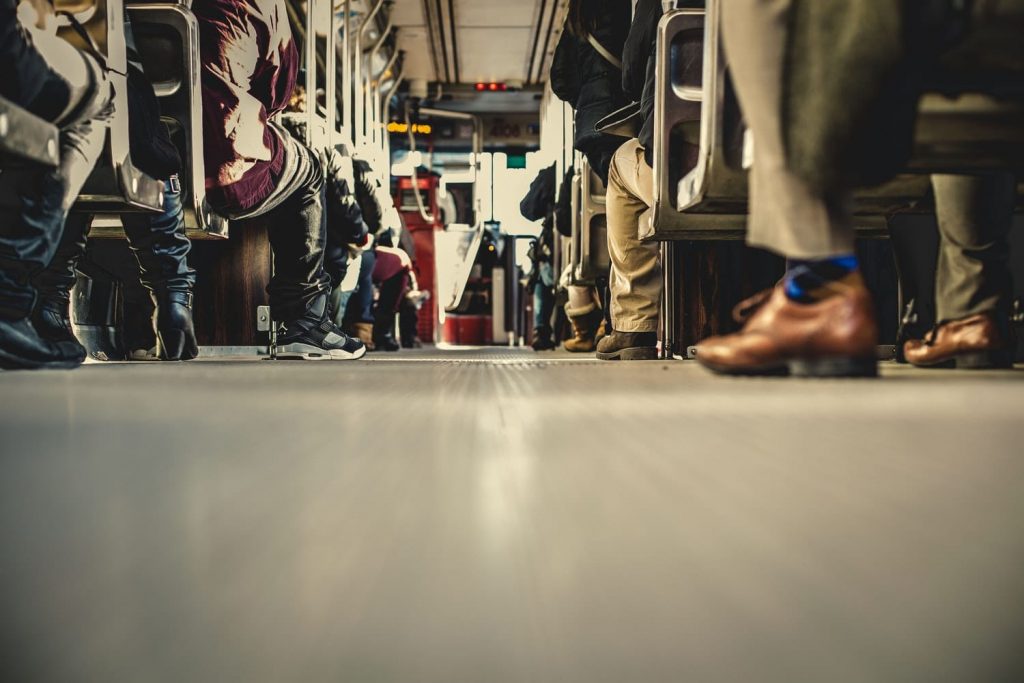How Syracuse moves: Public transit in the Salt City
How Syracuse moves: Public transit in the Salt City

Asia Grimes, 26, sat in the warmth of the inner lobby at the Centro Bus Hub on South Salina Street, thumbing through an iPhone while her five-year-old daughter, Arianna, played with a paper bus schedule. On the other side of the glass, the terminal was completely empty of people and buses, uncharacteristic for a Saturday afternoon at the city’s main transit hub.
“I can’t do this,” Grimes said through a smile as she shook her head slightly. “I can’t wait to get another car.”
Grimes explained she was recently forced to junk her vehicle because of engine problems that were too expensive to fix. Her evening commute to work as a certified nursing assistant has ballooned from an easy 20 minutes by car to over an hour and a half on the bus.
Data from Centro’s most recent rider survey report shows that the majority of passengers say they are satisfied with the level of service currently provided. However, some say they often have to combine other modes of transportation to arrive at their intended destination, often because of infrequent service. That same data also determined that 80 percent of Centro riders used the service because they do not have access to a car, and a majority of that pool used the bus primarily for commuting to work.
The Syracuse Metropolitan Transit Council, the area’s transportation planning authority, released a report earlier this year showing nearly a third of households in the city of Syracuse are designated as “zero-vehicle,” meaning they have no car. Outside of the city lines but still within Onondaga County, that number shrank to just six percent, suggesting a massive disparity in access to personal transportation in the city compared to the suburbs. Nationally, an estimated 8.7 percent of households across the country do not have a car, according to the most recent data from 2016.
Because Syracuse’s poverty and zero-vehicle households are primarily centered in the city—where Centro’s bus service is more frequent—access to jobs and opportunities further out in the larger metropolitan area like Clay, Cicero and Camillus can be limited for those living closer to the region’s center.
Deborah Hundley, president of local non-profit Providence Services, said there is a large variety of jobs, particularly in the northern parts of the county, that could be filled with city job-seekers if they could just get there. Hotels, warehouses, restaurants and shipping companies are always looking for more help, Hundley said.
Providence Services operates van-pooling for riders traveling along the same route. Currently, their vans make four scheduled trips from Syracuse to East Syracuse for $6 each way. A final 11 p.m. van also takes riders from the DestinyUSA area back to Syracuse.
Those without access to their own car or the means to pay for alternatives like ride-share or van-sharing are left to rely on other methods to traverse the area’s 600-plus square miles. For residents like Abu Muslim, that often means pairing other transit choices like his bicycle with the services that Centro already provides.
“I love it, it couldn’t get any better,” Muslim said without a smile as he loaded his bicycle into the rack on the front of a bus.
He lives in the Brighton Towers Apartments, a community residence exclusively for seniors age 55 or older. Depending on the time or day of the week, Muslim said he waits upwards of two hours for service to and from his residence.
The Centro schedule for his particular line, SU40 to Nob Hill Apartments, shows that service departs approximately every half-hour from his nearby stop during weekday morning commute times. After 8 a.m., service becomes hourly. On weekends, Muslim can wait almost 90 minutes for a bus to arrive at the stop outside of his home.
To make his commute and wait times shorter, Muslim said Centro could consider removing unnecessary stops along the SU40 line.
“It should go straight down Brighton Avenue into Salina Street,” he said. “It shouldn’t go through all them little side streets that it does.”
While adding more stops for Centro’s fleet of 238 busses sounds like a logistical solution, Centro’s VP of Communications Steve Koegel said it’s just not that simple.
“Transit is going to take longer than an automobile, it’s just the nature of our service,” he said.
Koegel explained that the number of stops correlates with the number of people using the service. Drastically reducing the amount of stops to speed up wait times isn’t an option. That approach can “disenfranchise” or present undue hardships on individuals who then have to walk much further distances to get to a stop, Koegel said.
“If you eliminate stops that aren’t being used, you’re not really improving your time since you’re not stopping there anyway,” Koegel added.
Some female riders like Reese Smith said that if Centro is unable to increase the bus frequency, then they should at least consider extending the final bus times later into the evening, in the interest of safety.
Smith lives on the South Side and depends on the bus to get around; she refuses to use services like Uber and Lyft after a spate of negative experiences with what she described as “rogue drivers.”
Reese also said ride-sharing is too expensive on her limited budget given that she’s out of work. Currently, Centro charges $2 for one-way bus fare, a price Smith said does not pose a challenge for her financially.
“I wish it would run a little more, especially the Midland bus,” Reese said, explaining the SY54 Midland bus stops around 6:20 p.m., often forcing riders to walk in the dark to the nearby SY10 bus on South Salina Street.
Other solutions, like a potential partnership between Centro and Uber or Lyft to help low-income residents were considered in early 2017, but have yet to produce any new initiatives. Centro officials said those conversations remain ongoing.





